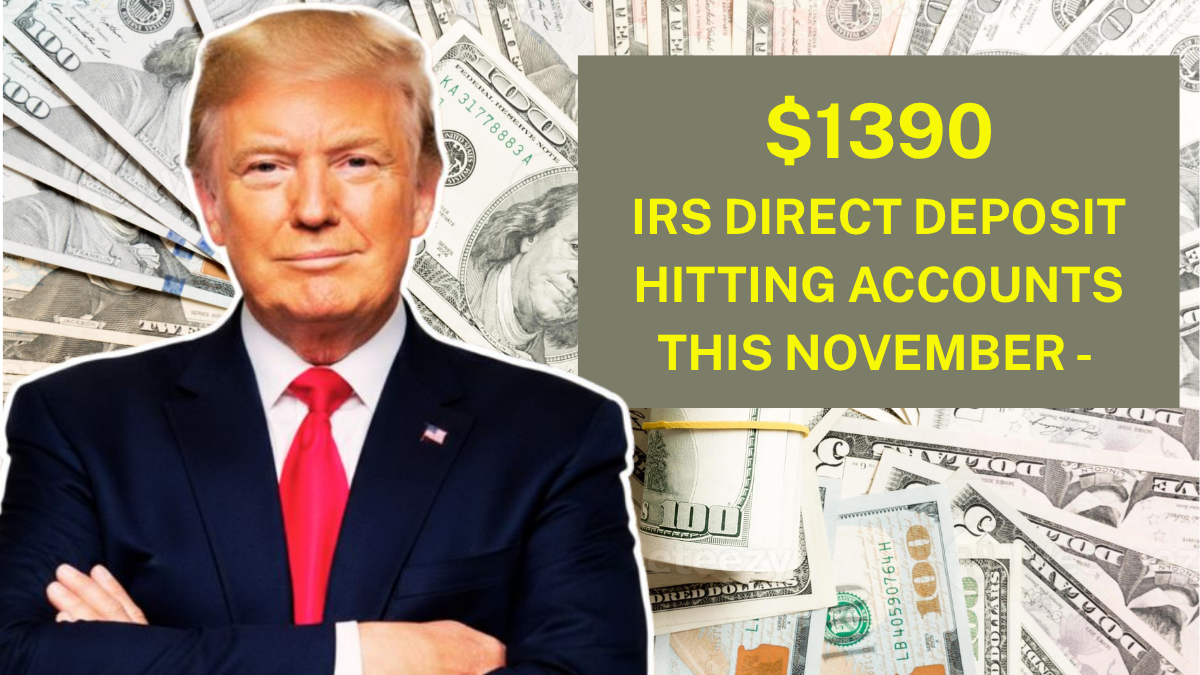The IRS has started distributing $1,390 inflation relief payments in November 2025. This targeted financial aid is designed to help low and middle-income Americans cope with rising living costs caused by inflation. Unlike three rounds of pandemic stimulus checks, this program focuses on taxpayers who meet specific income and filing criteria to ensure the funds reach those most in need.
Who Qualifies for the $1,390 Payment?
- Single filers with annual incomes below $75,000 qualify for the full $1,390 payment.
- Married couples filing jointly with combined incomes under $150,000 are eligible for a total of $2,780.
- Social Security, Supplemental Security Income (SSI), and Social Security Disability Insurance (SSDI) recipients who meet income and residency rules will receive the payment automatically.
- Most eligible individuals who filed their 2024 tax return on time do not need to take any additional action.
- Dependents or seniors who did not file a 2024 return should update their bank or mailing information via the IRS’s online portal to avoid delays.
When Will Payments Be Sent?
Payments started rolling out in November 2025, with priority given to early filers who have direct deposit information on file. Direct deposits generally appear within 3 to 5 business days after processing. Paper checks will be sent to those without bank account details on record but may take longer due to postal service delays. The IRS aims to complete disbursements by mid-November to provide relief before the holiday season.
How Will Americans Receive Their Payments?
The IRS is utilizing the same infrastructure used for pandemic stimulus payments. Recipients will see deposits labeled “IRS TREAS 310 – TAX RELIEF” in their bank statements. Social Security beneficiaries using Direct Express cards will have the funds loaded automatically. The IRS also relaunched its “Get My Payment” portal to allow people to track their payment status in real time.
Why Is the IRS Offering This Payment?
This relief initiative is a response to ongoing inflation that has raised prices on essentials such as food, fuel, and housing, disproportionately affecting working families. Funded from federal surplus relief reserves in the 2025 fiscal package, the $1,390 payment is intended as a temporary inflation offset and a bridge to broader economic recovery measures planned for 2026.
How to Check Your Payment Status
To check the status of your payment, you can use the IRS’s online “Get My Payment” tool by entering your Social Security number’s last four digits, filing status, and other relevant details. It is recommended to update your personal and banking information on the official IRS website promptly to ensure timely delivery.
What if You Didn’t Receive Your Payment?
If you believe you qualify but have not received a payment within a reasonable time, ensure your banking and mailing information is current on the IRS online portal. People who did not file a 2024 tax return should file or update their information to avoid missing out on the relief funds.
How Does This Payment Differ from Previous Stimulus Checks?
Unlike the universal stimulus payments during the pandemic, this $1,390 inflation relief payment is targeted specifically to individuals and families experiencing financial hardship due to inflation. It is not a stimulus or a recurring payment but rather a one-time financial aid to help bridge ongoing economic challenges.
FAQs
Do I need to apply for this payment?
No, most eligible recipients will automatically receive the payment if they filed taxes timely for 2024.
Can I update my bank or mailing information?
Yes, updating your details via the IRS.gov portal is essential to prevent delays.
Is this payment taxable?
Generally, this payment is not taxable income.
This extended summary breaks down the 2025 IRS inflation relief payments to clarify how and when individuals can expect to receive support, who qualifies, and what actions may be needed to ensure receipt of funds.
